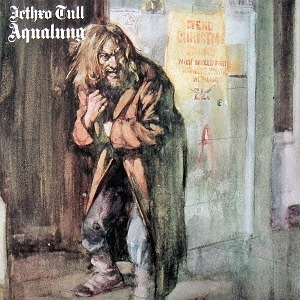It was 1972. I was 11 years old. I was happy listening to The Beatle's "Hey Jude" on AM radio, and I loved my cassette tapes of Cat Stevens and Elton John. My older brothers and cousin were into a different scene, though, which at that moment was Neil Young's new album, Harvest.
It seemed all right to me, but I preferred my music.
A couple of years later, Neil Young's album On the Beach was released, and by then I was a convert. I became a fan of everything Neil recorded and am a fan to this day.
Immediately after Neil released Harvest, which is his most popular and best-selling album, he was quoted as saying that the album "put me in the middle of the road. Traveling there soon became a bore, so I headed for the ditch. A rougher ride but I saw more interesting people there."
He next released Journey Through the Past, a non-commercial soundtrack to a non-commercial movie, then Time Fades Away, which was an album no one really wanted to listen to because it was rough and raw. Then On the Beach and Tonight's The Night, depressing albums that only appealed to his most committed fans.
I liked all of it. I was already into depressing music and the rough edges didn't bother me. There was something about this guy that grabbed me, and I couldn't get enough of him. I had to have more.
By the end of the 70's, Neil saw the writing on the wall, knew that punk and new wave were in, and that rock'n'roll was dead, or at least on hiatus. He embraced Devo, an American new wave band, and together they penned the anthems "My, My, Hey, Hey (Out of the Blue)" and "Hey, Hey, My, My (Into the Black)."
With these songs and more he released Rust Never Sleeps, an album that wasn't commercial, but it at least spoke to a generation that many had thought had stopped listening. And more importantly, it questioned the rock'n'roll of the past and present, and posited that Elvis was no longer the king. He asked, could it now Johnny Rotten, the singer and songwriter of the Sex Pistols?
Neil was sure that punk and new wave were important, but he had never been a clairvoyant, so he couldn't have known the 80's would bring a sea change to the music industry. Rockers were no longer free to create whatever they wanted, and record companies found all sorts of ways to make money off new acts. It became difficult for those who were popular in the 60's and 70's to find a place in this brave new decade.
He struggled. He moved from Warner/Reprise to Geffen Records and found a hostile working environment. They didn't like his new techno album, Trans, so he tried to release a country flavored album, but they wanted rock'n'roll, so he produced and old-fashioned rockabilly album, Everybody's Rockin', was sued, and that set the tone for most of the 80's.
By the time he was able to free himself from Geffen, the 80's were mostly over, and while he hadn't made a whole lot of progress, he still had a fire in his belly. That was about the same time the grunge scene came into full effect, with bands like Nirvana, Soundgarden, and Pearl Jam selling lots of albums and filling arenas.
It turns out that these bands had been inspired by Young's seminal album, Rust Never Sleeps, and Kirk Cobain even used lyrics from "My, My, Hey, Hey (Out of the Blue)" in his suicide note in 1994.
Neil was dubbed the Godfather of Grunge, and all the problems he'd had in the 1980s were forgotten. He was seen by many as the guy who refused to compromise, and who kept on rocking regardless of what was going on.
Interestingly, although he'd spent the 1980s flitting between genres, including hard rock, techno, rockabilly, country-western, blues, and more, once he got that out of his system, he returned to releasing folk-rock, country-rock, and rock'n'roll albums.
I won't bore you with the rest of his discography, but suffice it to say, Neil Young is the guy who has always released whatever he's wanted to. It doesn't matter if the music was considered good, or if people wrote it off, because there's only one person Neil Young has ever aimed to please, and that's himself.











